We admire long-range competitive shooters for doing something we mere shooting mortals find nearly impossible. Their ability to manage distance, wind, and overly complicated reticles on specialized rifles to deliver hits on targets that can hardly be seen with the naked eye is both an art and science. Usually a precision centerfire rifle is custom-made, costing upwards of $3,000 or more with a wait time that can take years, depending on the popularity of the custom-rifle builder. Adding a suitable optic can increase the cost an additional $1,000 to $2,000, plus bipod and other pieces of gear, not to mention quality ammo. All in, a shooter could easily sink $7,000 into a set up before even sending a single piece of lead downrange.
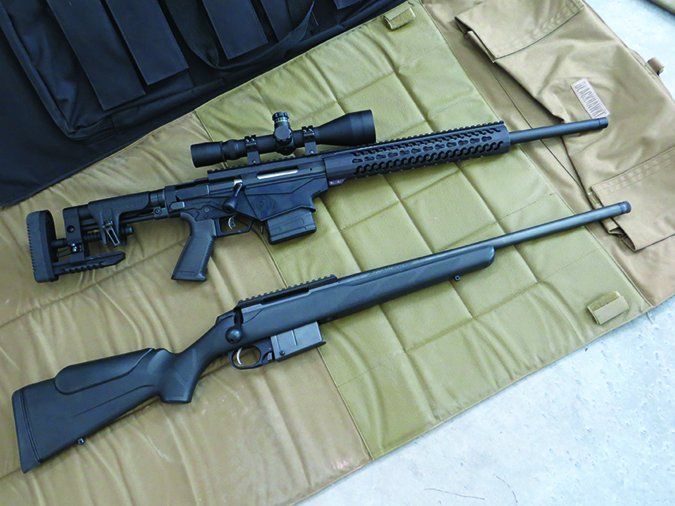
Firearm manufacturers, seeing the shooting public’s interest in long-range shooting, are offering rifles advertised as “tactical” and “precision” to attract long-range hunters and weekend paper punchers. We all know that setting a barreled action in a black polymer stock does not make a precision rifle. But lately, some large firearm manufacturers have begun mass-producing accurate rifles that rival some custom-built rifles without the wait or the high cost. These mass-produced precision rifles can handle many long-range chores, and some of them come in compact lengths and have the ability to add muzzle devices, such as suppressors. We wanted to take a look at a few of these rifles to get a sense of their accuracy as well as their consistency, ease of use, ability to be customized, and cost. We began looking at such rifles in the January 2016 issue when we compared three bolt actions from Savage, Ruger, and Howa, all chambered in the very accurate 6.5 Creedmoor round. Our favorite in that test was the Savage Arms Model 12 Long Range Precision 19137, followed by the Ruger Precision Rifle 18005 and the Howa HB HKF92507KH+AB. Here we take a second look at the Ruger Precision rifle, this time in 308 Winchester, against a Tikka T3 CTR. The 308 Win. is a common and popular round, with many factory ammunition options available. We tried the spectrum of 308 Win. ammunition and bullet weights, from inexpensive Sellier & Bellot 150-grain soft-point hunting rounds and Norma USA’s 168-grain Sierra hollowpoint boattail to expensive 175-grain boattail Sierra MatchKing hollowpoints in the Federal Premium Gold Medal match ammo line, as well as Hornady 155-grain TAP FPDs. Both rifles were fired from a sandbag rest as well as from seated and prone positions. We also made sure the temperature, wind speed, and humidity conditions were similar when we shot these rifles, even though these factors have more affect on targets at farther distances than the distance tested. Barrels were allowed to cool after each string.
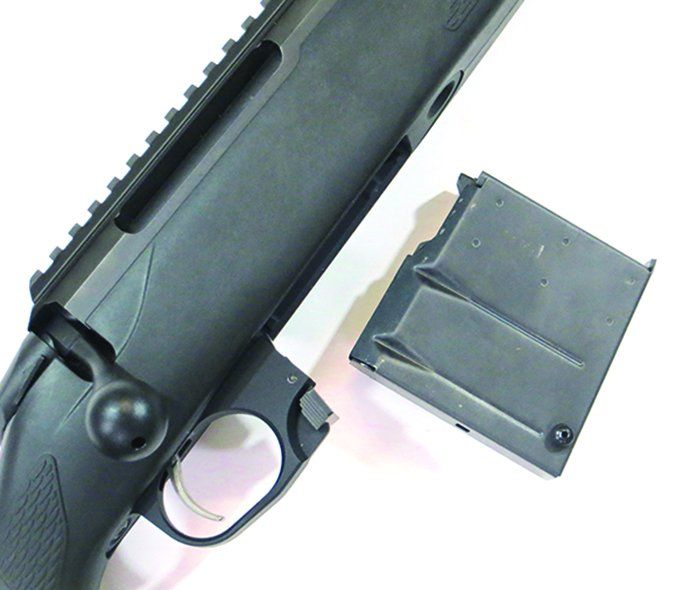
Test firing was conducted at 100 yards, though that distance may seem short compared to what these rifles’ makers say the products can do. This is the most common rifle-range distance many shooters have access to. Members of this particular test team had experience with high-end SIG Sauer SSG 3000 and Sako TRG M10 and TRG 42 rifles, and numerous chassis-style rifles with Remington, Savage, and custom-rifle-maker barreled actions, as well as long-range hunting rifles like the Savage 11/111 models and Remington Model 700 varmint rifles. A Leupold Mark 4 4.5-14x50mm LR/T scope (Brownells.com, $900, #526-000-150WB) was moved between rifles Warne Maxima-series steel rings to ensure there was no optic variability. The Mark 4 series has been used by the U.S. Marine Corps on the M14 rifle and with the U.S. Army’s M24 sniper weapon system. One might consider it to be a benchmark in tactical scopes. It is made with a one-piece 30mm tube and a 50mm objective. The M1 TMR (Tactical Milling Reticle) reticle is located in the second focal plane, so it stays one size even as the magnification power is increased. To use the Mil-Dot ranging features, the scope must be set to the highest magnification. We bore-sighted the rifles prior to starting range work. Here’s what our shooters found out at the range:
RANGE DATA
| FEDERAL PREMIUM GOLD MEDAL 308 WIN. 178-gr. SIERRA MATCHKING BTHP |
Tikka T3 CTR | Ruger Precision Rifle |
| Average Velocity | 2532 fps | 2546 fps |
| Muzzle Energy | 2490 ft.-lbs. | 2519 ft.-lbs. |
| Smallest Group | 0.8 in. | 0.5 in. |
| Average Group | 1 in. | 0.8 in. |
| HORNADY TAP 308 WIN. 155-gr. TAP FPD |
Tikka T3 CTR | Ruger Precision Rifle |
| Average Velocity | 2611 fps | 2751 fps |
| Muzzle Energy | 2347 ft.-lbs. | 2605 ft.-lbs. |
| Smallest Group | 0.5 in. | 0.3 in. |
| Average Group | 1.1 in. | 0.6 in. |
| NORMA USA MATCH 308 WIN. 155-gr. SIERRA MATCHKING HPBT |
Tikka T3 CTR | Ruger Precision Rifle |
| Average Velocity | 2641 fps | 2644 fps |
| Muzzle Energy | 2607 ft.-lbs. | 2608 ft.-lbs. |
| Smallest Group | 0.7 in. | 0.5 in. |
| Average Group | 0.9 in. | 0.9 in. |
| SELLIOR & BELLOT 308 WIN. 150-gr. SP |
Tikka T3 CTR | Ruger Precision Rifle |
| Average Velocity | 2754 fps | 2737 fps |
| Muzzle Energy | 2527 ft.-lbs. | 2494 ft.-lbs. |
| Smallest Group | 1.1 in. | 0.5 in. |
| Average Group | 1.3 in. | 0.8 in. |

Tikka T3 CTR 308 Winchester, $950
GUN TESTS GRADE: A-
The CTR was well balanced and operated smoothly. If you want a rifle to both hunt and dabble in long-range shooting, then the CTR would be a good choice.
| ACTION TYPE | Bolt, two lugs 70-degree lift |
| OVERALL LENGTH | 40.1 in. |
| BARREL | 20 in. |
| SIGHT RADIUS | N/A; picatinny rail |
| OVERALL HEIGHT | 6.7 in. |
| WEIGHT UNLOADED (NO OPTIC, EMPTY MAG) | 7.5 lbs. |
| WEIGHT LOADED | 9.3 lbs. |
| ACTION FINISH | Blued |
| BARREL FINISH | Blued |
| MAGAZINE TYPE | (1) 10-Rd. detachable steel box |
| STOCK | Fiberglass-reinforced copolymer polypropylene |
| STOCK LENGTH OF PULL | 13.1 in.; adjustable |
| TRIGGER PULL WEIGHT | 2.9 lbs., adjustable 2-4 lbs. |
| SAFETY | 2-Pos. |
| ACCURACY GUARANTEE | 1 MOA |
| WARRANTY | 2-Year limited |
| TELEPHONE | (301) 283-2191 |
| SITE | Tikka.fi |
| MADE IN | Finland |
Tikka has been building rifles in Finland since 1918, and in 1983 Tikka and Sako, another Finnish rifle maker, merged. They are now part of the Beretta Holding Group. The T3 series is Tikka’s latest generation of rifles manufactured by Sako and imported into the U.S. since 2002.
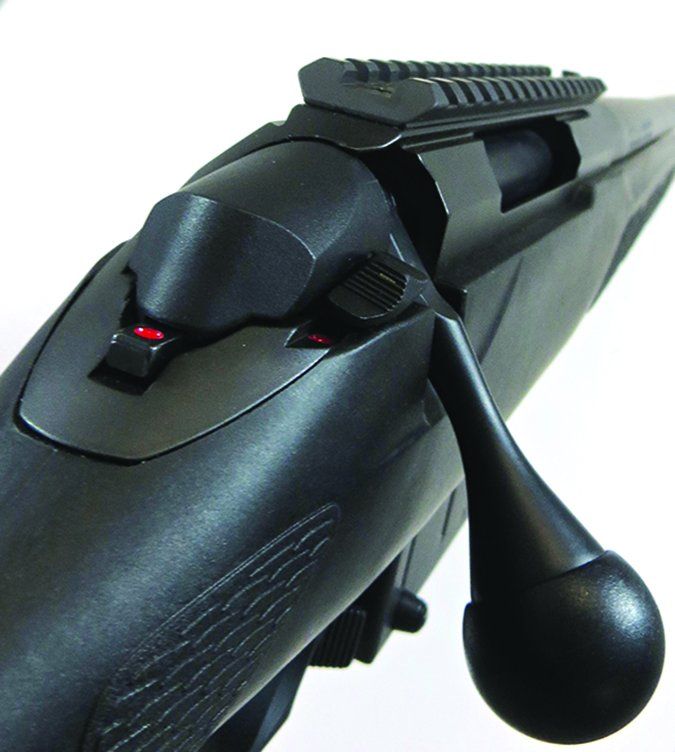
The CTR features the rigid, one-piece T3 action with extra metal on the sides and top of the receiver. Metal work was well executed with a non-reflective matte-black finish. A Mil-STD-1913 Picatinny rail was bolted on top of the receiver. The receiver was broached, not drilled, to give the bolt a smooth action. Bolt manipulation was impressive; slick and as smooth as glass. When the shooter operates the bolt, only the lugs make contact with the receiver, so the two-lug bolt moves easily and smoothly. Bolt lift is 70 degrees, so it cleared the Leopold’s eyepiece with ease. The rifle cocks when the bolt handle is lifted. The polymer bolt knob is large and slick, so it can easily be palmed when firing in position. The bolt handle can also be removed if a user chooses. Empty cases are ejected via a spring-loaded plunger ejector similar to a Sako extractor. A visual and tactile cocking indicator protrudes from the rear of the bolt so a user knows the rifle is cocked. The bolt-release stop is located on the left side of the receiver. Press the rear portion of the bolt stop, and the bolt assembly can be withdrawn from the receiver. A two-position safety is located on the right side of the receiver and falls under the thumb of a right-handed shooter. Press it rearward to lock both the trigger and bolt.
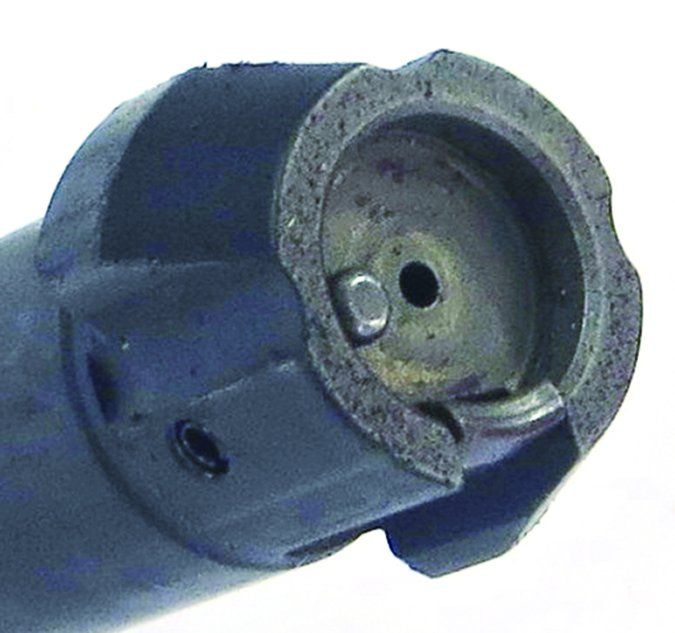
According to Sako, both Tikka and Sako barrels are manufactured the same way. All Tikka rifles, including the CTR, have a 3-shot-MOA precision guarantee; Sakos have a 5-shot MOA guarantee. There is no break-in procedure for Sako and Tikka barrels because of the manufacturing processes. They are ready to go right out of the box, according to Sako. The CTR is equipped with a 20-inch cold hammer-forged barrel with a semi-heavy contour and an 11-degree crown. The muzzle is threaded 5⁄8×24 inch, so it is compatible with standard U.S. muzzle devices such as suppressors, flash hiders, and muzzle brakes, a plus on our grading scale. The muzzle threads are protected with a screw-on cap. Rifling was a 1:11-inch twist rate and four grooves.
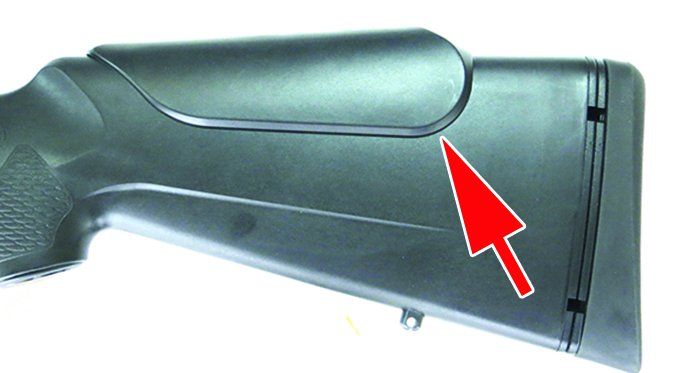
The bottom metal is lightweight aluminum with an oversized trigger guard that is glove friendly. A slight bevel in the magazine well speeds up magazine reloads. The CTR feeds from a steel, center-feed detachable 10-round box magazine. It ships with one magazine. The ambidextrous magazine release is located in the forward portion of the trigger guard and is pressed forward to drop magazines free. We liked the fact that the release can be operated by the shooter’s trigger finger without having to break his grip on the rifle, plus the magazine sits flush with the bottom of the trigger guard, so it is easier to reload, even when shooting in the prone position.
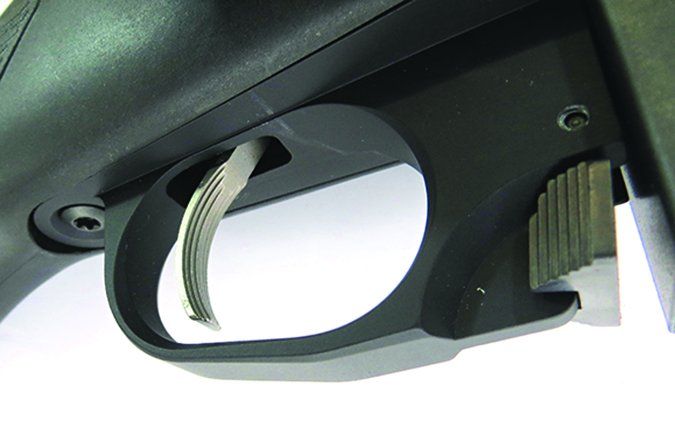
The single-stage trigger on the CTR averaged a crisp 2.9 pounds with no creep. We thought the trigger was well suited for precision work. It can also be adjusted from 2 to 4 pounds, but to do that, the barreled action needs to be removed from the stock, which we thought was bothersome.
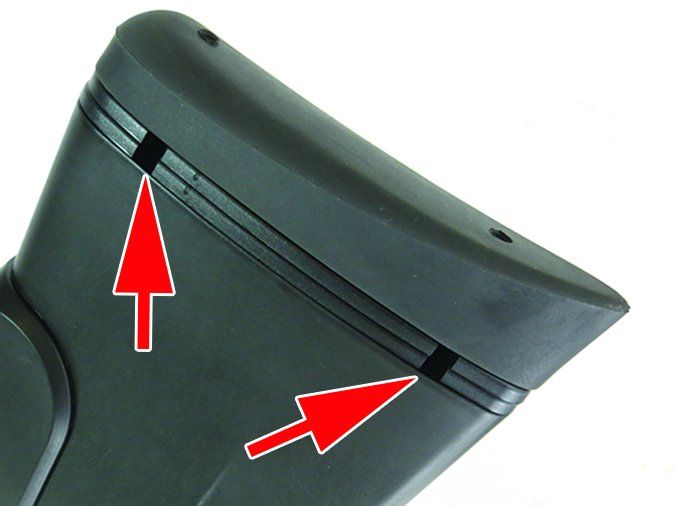
The traditionally styled stock is super light weight and is made of fiberglass-reinforced copolymer polypropylene. The barrel is free floated all the way to the action, with two hex screws holding the barreled action to the stock. Gripping areas are textured and offered provide plenty of grip without being too sticky. A polymer cheek riser provides a high cheek weld, helpful when mounting large-objective optics, which may raise the sightline. By adding or removing spacers, the length of pull could be adjusted. Using a screwdriver to loosen the butt-pad screws allows the spacers, which have slots, to be easily added or removed without completely removing the butt pad screws. For a single shooter who might only perform this task once, it’s not that big a deal. But it’s a tedious process when the LOP needs to be adjusted for clothing or a different shooter.
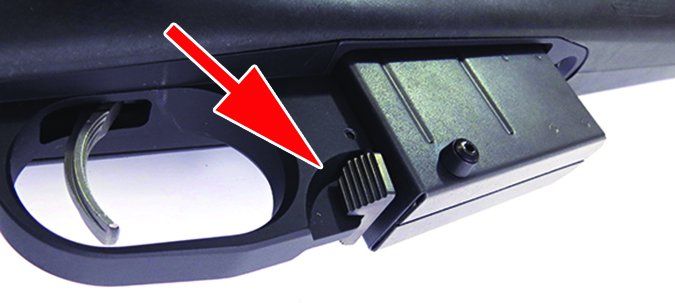
The rifle had a nice balance and it carried well, with some testers thinking this rifle could easily be used on long stalks. Shouldering the CTR felt similar to a traditional compact hunting rifle; where the CTR made its personality known was on the sand bags. Our experienced shooters could easily shoot one-MOA groups or better with three shots. The Hornady TAP FPD performed the best with 0.52-inch three shot groups. The bolt operated smoothly, chucking empties with authority from the smallish ejection port. Even though the ejection port was small, there was still plenty of room to single load rounds.
Our Team Said: The CTR was well balanced and operated smoothly. The rounded forend was adequate for bench work, but for better precision work, the stock would need to be replaced with one that had a squarer front profile. Of course, replacing the stock would most likely mean the rifle would be less hunter friendly. We would leave it as it is If you want a rifle to both hunt and dabble in long range shooting then the CTR would be a good choice.

Ruger Precision Rifle 18001 308 Win., $1399
GUN TESTS GRADE: A
The Ruger is set up for long-range shooting and offers a lot of adjustment options. Out of the box, this is an easy-to-shoot rifle that is very accurate for the price point.
| ACTION TYPE | Bolt, 3 lugs, 70-degree lift |
| FOLDED LENGTH | 30.60 in. |
| OVERALL LENGTH | 38.25-41.75 in. |
| OVERALL HEIGHT | 7.3 in. |
| WEIGHT UNLOADED (NO OPTIC) | 9.7 lbs. |
| WEIGHT LOADED | 11.5 lbs. |
| BARREL | 20 in. long; 4140 chrome-moly steel, 1:10 twist with 5R rifling, 5 grooves |
| UPPER RECEIVER | CNC machined, 4140 chrome-moly steel, 20-MOA picatinny top rail |
| LOWER RECEIVER | 7075-T6 aluminum, type III hard-coat anodized |
| GRIP | AR style |
| MAGAZINES | (2) Magpul PMags, 10 Rds. |
| MAGAZINE COMPATIBILITY | M110, SR25, DPMS, AICS, some M-14 |
| STOCK | Folding Ruger Precision MSR, with adjustable LOP, cant, cheekpiece |
| STOCK LENGTH OF PULL | 12-15.5 in., adjustable |
| TRIGGER | Ruger Marksman Adjustable, 2.25-5 lbs., single stage |
| SAFETY | AR style |
| HANDGUARD | Samson Evolution KeyMod |
| SIGHTS | N/A |
| ACCURACY GUARANTEED | None stated |
| WARRANTY | None |
| TELEPHONE | (336) 949-5200 |
| SITE | Ruger.com |
| MADE IN | USA |
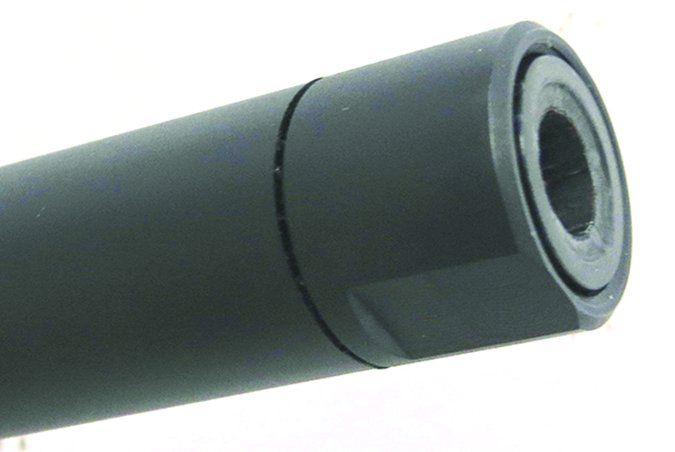
If one-hole groups are gratifying, then the Ruger Precision Rifle will make some shooters very happy. Introduced in 2015, the Precision Rifle is Ruger’s foray into long-range shooting with a rifle that combines design elements of a tube gun and typical chassis rifle. Basically, tube guns bed the action and barrel in a straight line tube stock. Gary Eliseo of Competition Machine Inc. (gotxring.com) builds one of the more popular tube-gun chassis that use actions from the mass-produced-firearm manufacturers like Remington. Tube guns are renowned for their accuracy and are in use with F Class, long-range prone, and High Power competitors. Remington’s XM2010 and Accuracy International’s AX rifle systems are other examples of tactical rifles that also use tube gun design features.
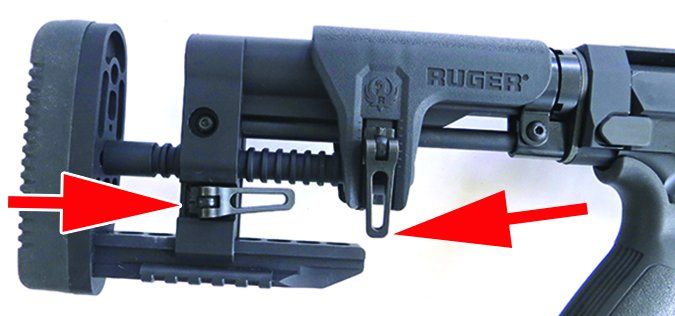
Ruger builds the Precision Rifle around its American action and adjustable Marksman trigger, with the tube holding the action, barrel and stock in a straight-line configuration, like competition tube guns and AR rifles. The straight-line design better manages recoil compared to a traditional stock, providing better accuracy. Twist and torque is magnified by a traditional stock and is lessened with the straight-line set up. Ruger refers to the main components of the Precision Rifle in a similar fashion to an AR, calling the top an “upper” and the bottom portion a “lower.” These upper and lower components do not disassemble like on an AR, however. Tools are required. For routine maintenance, the Precision Rifle is disassembled like a typical bolt action. The lower portion holds the safety selector, the same type as an AR. In fact the Precision Rifle uses many AR components. The handguard, stock, safety selector, and pistol grip are all compatible with AR-15 aftermarket products. So the rifle is very adjustable, which we liked a lot. The barrel can also be easily swapped out using an AR wrench and headspaced like with a typical bolt action. This, too, is a good feature, especially as barrels wear and accuracy erodes with use. The magazine is an AR-10 style and ships with two 10-round Magpul PMags. It also accepts AICS magazines and works with some M14-style magazines. We found this to be very convenient. The cost and availability of a 10-round PMag is not expensive (Brownells.com, $19, #100-011-562WB) or hard to find, in contrast to additional T3 CTR magazines, which list for $150 per mag from some suppliers.
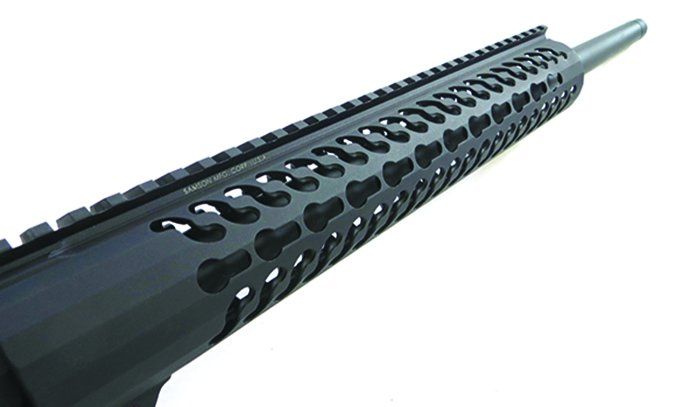
The Ruger’s one-piece upper is constructed of 4140 chrome-moly steel. The action has a three-lug bolt with a 70-degree lift. The bolt handle is a large, smooth pear-shaped knob. We liked it fine as is, but it can be swapped out if so desired. A bolt disassembly tool is located in the bolt shroud. We thought the action was smooth, but not as silky as the Tikka. Like the Tikka, the ejection port is small, yet it offered unimpeded tossing of empty cases and allowed loading of single cartridges. Since the PMag’s follower has a bolt hold open in the follower, the bolt will not close when the magazine is empty. This is a minor inconvenience when you want to load one at a time.
The 20-inch medium-taper barrel is cold hammer forged 4140 chrome-moly steel with 5R rifling and a 1:10-inch twist rate. The muzzle is threaded to accept muzzle devices. Ruger does not have a break-in recommendation, other than cleaning the barrel before shooting as a safety precaution to remove any obstruction that may reside there after shipping. Other than that, there is no break-in recommendation, as on the Tikka.
The handguard is a Sampson Evolution KeyMod model that allows adding rail sections to mount accessories like sling swivels and bipod. The Ruger comes with a Picatinny rail section and KeyMod QD swivel mount, which we thought was convenient and useful. Bolted on top of the action is a 20-MOA Picatinny rail, which cants the scope for more elevation at extended ranges. Ruger was smart to add this, we thought. Between the 20-MOA rail and the Sampson handguard, there is about 20 inches of rail to mount all sizes of optics, including night-vision equipment.
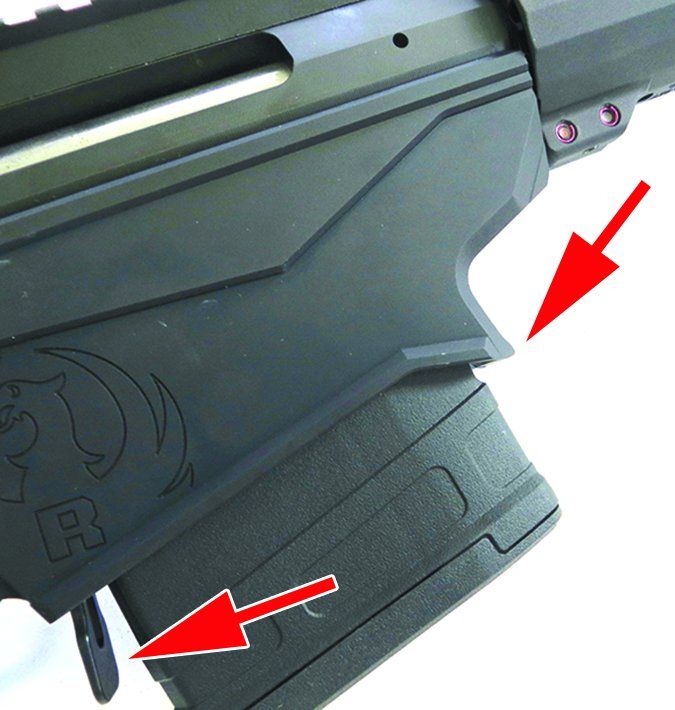
Aft of the action is Ruger’s proprietary Precision MSR stock, which attaches to the rifle via an AR-style buffer tube. The tube itself is attached to a hinge so the stock folds to the left side of the rifle and locks into place. The rifle can be fired with the stock folded. The stock is adjustable for length of pull (LOP), comb height, and cant. This feature allowed a shooter to modify the stock to fit his stature and shooting style. It also made for more solid shooting positions, which translated into smaller groups downrange. A series of cam levers allow fast adjustment for the LOP and comb. The levers can be reversed for lefties. Allen wrenches are required to adjust cant.
The soft-rubber recoil pad is sticky. A Picatinny rail on the stock toe allows attaching a monopod for added stability. We feel the stock would be sturdy enough to compete in a field-shooting-type competition, where it could get banged up during stages and fast positioning. It was not fragile by any means. A button on the left side is pressed to fold the stock, and a lever locks it folded into place. This is a nice feature, especially when transporting the rifle. It snaps back into place when extended. With the stock folded, the bolt can be removed by pressing the bolt-stop release. This is a bit awkward to perform the first time, as you want the stock folded only part way. The stock also has three quick-detach (QD) swivel mount points.
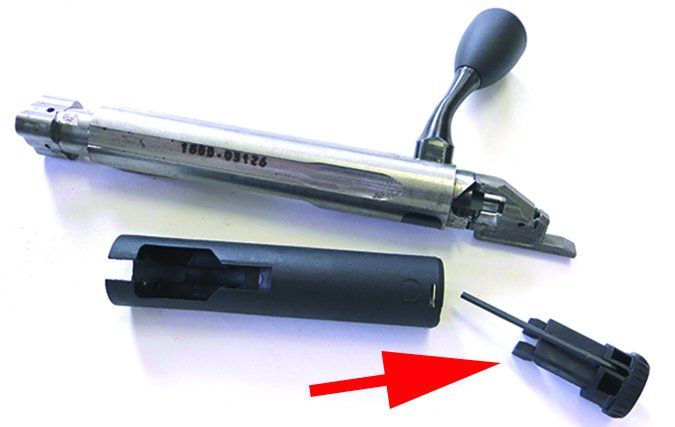
The lower is made of 7075-T6 aluminum forging. The magazine well is flared to aid magazine reloads, and the front edge of the magazine well is also flared so the rifle can be braced against a barrier or support when shooting — another small detail that aids usability. The safety selector rotates 45 degrees to activate “Fire” or “Safe” modes, and this is easily accomplished with a flick of a right-handed-shooter’s thumb. The user has the ability to reverse the selector for a left-handed shooter or replace it with an aftermarket ambi selector. Just forward of the trigger guard is the magazine release, a large flat paddle that is pressed forward to release the magazine. Magazines did not drop free; instead, they had to be pulled free. With more use, the plastic PMag may drop free when empty. We found this release easier to operate than the Tikka’s with bare or gloved hands. The trigger guard is small, which could be an issue with a large-handed shooter wearing gloves, though we had no problems with it.
Shouldering the Precision Rifle takes some muscles, but this rifle was not designed to shoot from the shoulder, though you could in a pinch without needing to do bench presses every day. All team members were able to get comfortable and solid in a seated or prone position with the Ruger without straining muscles. It is an easy rifle to shoot. The single-stage trigger is set at 2.5 pounds, and very crisp with no creep. It allowed shooters to aim and fire the round with little movement. Just a touch was required. The trigger is adjustable using a Allen wrench through a slot in the magazine latch — another nice feature. Most competitive tube guns place the bolt under the cheek of the shooter so bolt manipulation is fast and less disruptive to the shooting position. The Ruger’s bolt is more forward but is placed over the trigger so manipulation is still fast.
Some of our shooters were able to get 1⁄4-MOA with the Hornady ammo, and with all ammo types, we averaged under 1-MOA which we thought was impressive. Though we did not have enough PMC Bronze 147-grain FMJ ammo to collect data in both rifles, we were able to run some through the Ruger and got a 0.1-inch group. Enough said. The Ruger definitely liked all bullet weights, but it had a preference for lighter 308 bullets during our test.
Our Team Said: The Ruger provides a comfortable and familiar platform due to the AR-style features. It is a heavy rifle dedicated to long-range shooting and accuracy with numerous types of ammunition. The features on this rifle make it very adjustable by the owner. After the test, some team members who admit to being jaded about being marketed the “next hot thing” every year, were nodding their heads, saying this rifle definitely has potential.
Written and photographed by Robert Sadowski, using evaluations from Gun Tests team testers.




























I wany a sniper gun